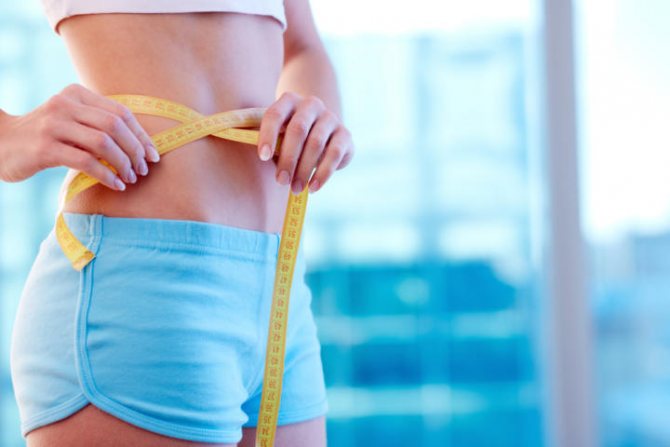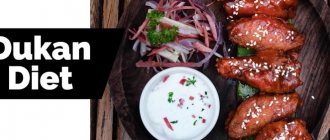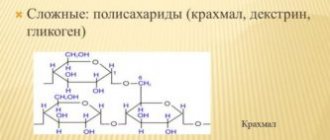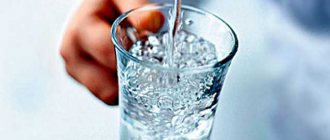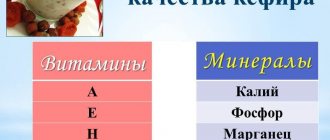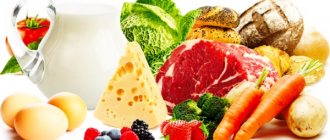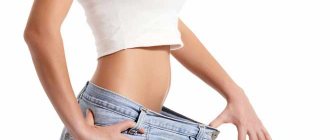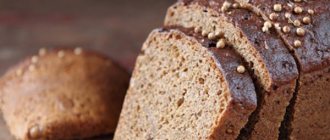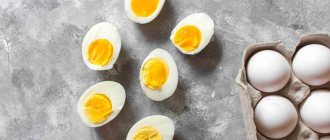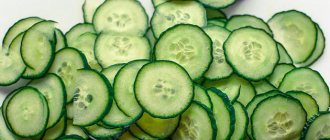What are the benefits of the buckwheat diet?
Buckwheat has long been nicknamed the queen of cereals. She received such an honorary title for a reason. Buckwheat contains many vitamins, micro- and macroelements necessary for the normal functioning of the human body. Buckwheat is also a source of protein, which is 100% digestible.
Buckwheat contains minerals such as iodine, iron, copper, zinc, and phosphorus. The cereal contains all B vitamins, vitamin E, and vitamin PP. In addition, buckwheat is an excellent source of coarse fiber and fiber, healthy amino acids and carbohydrates. Buckwheat is recommended for vegetarians as an alternative to meat, because the protein from buckwheat is very similar to the protein from meat.
There are 313 kcal per 100 g of cereal, which, in turn, are made up of:
- 62.1 g are carbohydrates;
- 14 g is water;
- 12.6 g are proteins;
- 3.3 g is fat.
Although the calorie content of buckwheat is quite high, this product allows you to get rid of excess weight by speeding up your metabolism.
The beneficial properties of this cereal are as follows:
- Buckwheat allows you to cleanse the body.
- It quickly quenches the feeling of hunger and keeps you feeling full for a long time.
- Thanks to buckwheat, you can get your weight in order, for example, get rid of a few extra pounds gained during pregnancy or during long holidays.
- Buckwheat is a product that can be used to prevent cancer, as it contains flavonoids.
- Regular consumption of buckwheat will help avoid blood clots and reduce the risk of developing heart and vascular diseases.
- Buckwheat helps normalize blood cholesterol levels.
- Buckwheat is a product that can be consumed by people with diabetes. Due to the fact that the glycemic index of cereal is low, blood sugar rises gradually and not abruptly. Therefore, carbohydrates from buckwheat are classified as “slow” and healthy.
The benefits of buckwheat
Buckwheat is a storehouse of useful substances that have a positive effect on the human body. It consists of the following:
- rapid saturation and long-term preservation of the feeling of satiety;
- maintaining muscles in excellent condition thanks to vegetable protein;
- normalization of metabolism, amino acids and fatty acids participate in this process;
- body cleansing provided by fiber;
- improving metabolism and saturating the body with microelements, vitamins, and minerals.
Pros of the buckwheat diet
The buckwheat diet has obvious advantages:
- It cleanses the body of toxins;
- All dishes on the menu are very easy to prepare;
- The weight comes off quite quickly;
- The body receives many useful substances;
- The feeling of hunger will not bother you for a long time.
The basis of the buckwheat diet is steamed buckwheat kupa. A glass of buckwheat is poured with boiling water (400 ml), the container is insulated and left overnight. In the morning the porridge will be ready. It should be eaten in several sittings, without adding salt or other seasonings.
Cons of the buckwheat diet
The buckwheat diet has a number of disadvantages, including the following:
- Avoiding salt and sugar consumption can have a negative impact on blood pressure and brain function. If a person feels tired and weak, then in the morning you can drink a glass of water with a spoonful of honey diluted in it.
- Two weeks is the maximum period of continuous adherence to the buckwheat diet. You can repeat the diet plan only after 2 months.
- In order to survive on a buckwheat diet, you need willpower, since the dishes do not differ in variety and rich taste.
You need to exit the diet correctly. You should eat in small portions, choosing foods with low calorie content. Otherwise, the lost kilograms will return very quickly.
Consequences and results

The buckwheat diet, both in the classic version and in the mixed version, is very effective for weight loss. Already in the first two or three days the body “dries out”, up to 3 kg of excess fluid is lost, and in 2 weeks you can really lose up to 15 kilograms. Most girls endure a strict menu for 1 to 3 days. If you diversify your diet a little, add meat, vegetables, unsweetened fruits, you can hold out more or less calmly for up to 2 weeks. The buckwheat diet is difficult, but good, this is confirmed by reviews and results of those who have lost weight.
Monotony and lack of taste are the main problems encountered on the buckwheat diet. But this is a problem with other mono-diets too.
On days 2-3, weakness often occurs. Some people begin to feel apathy by the end of the first day and may experience a headache due to hunger. If the symptoms do not go away after rest or worsen, give up the diet or make it less strict - add some glucose and vegetable fats.
The result depends on several factors: the state of metabolism, the amount of excess weight, lifestyle and, of course, the way you eat before the diet. If your weight norm is not critically exceeded, the buckwheat diet will not provide minus 10 kg even in two weeks. Curvy people will lose much more during a diet than thin people.
So, girls and women weighing 55/70 kg usually lose up to 3 kg in 7-10 days; with a weight of 70-80 kg – up to 7 kg; over 85 kg – over 10 kg. This does not take into account the 1-2 kg of fluid lost on the first day, which will be restored immediately after the end of the diet after salt is returned to the diet.
Rules for following the buckwheat diet
Buckwheat is a product that allows you to simultaneously lose weight and get rid of heaviness in the stomach. If you do additional exercise, the muscles in the waist area quickly tighten, and fat disappears from the sides. By following all the recommendations, you can get rid of 5-6 kg in a week on a buckwheat diet.
It is very good to visit the pool or go to the fitness room during a diet. To support the body, you can additionally take vitamin and mineral complexes.
How to eat on a buckwheat diet:
- Cereals should be consumed in their pure form. You cannot add salt, oil, milk, spices, etc. to it.
- Buckwheat should be steamed, not boiled. The effect will be better.
- The combination of cereal and kefir allows you to avoid feeling hungry for longer.
- To prevent the water-salt balance in the body from being disturbed, you need to drink clean water without gas; you can replenish fluid reserves with herbal decoctions and green tea.
- You need to drink at least 1.5 liters of water per day.
- You should expect that by the end of the diet, the weight loss process will accelerate and your appetite will decrease.
Helpful Tips:
- If weakness occurs or dizziness occurs, you can add a small amount of salt to the buckwheat. This will allow you to slightly retain fluid in the body and get rid of the ailment.
- If you experience an unbearable feeling of hunger, which is accompanied by a deterioration in your health, then you can move away from the diet a little and add other foods. In any case, you should not risk your health.
- You should not start dieting during or just before your period.
Experts' opinions
Refusal of salt and a poor diet can lead to pain, deterioration of well-being, and decreased blood pressure, so experts advise:
- When the first symptoms occur, lightly salt the dish.
- Take one spoon of honey in the morning to prevent irritability.
- Play sports, prefer walking, swimming and jogging.
- Organize a course of vitamin therapy.
- You can resort to a repeat diet program only after two months.
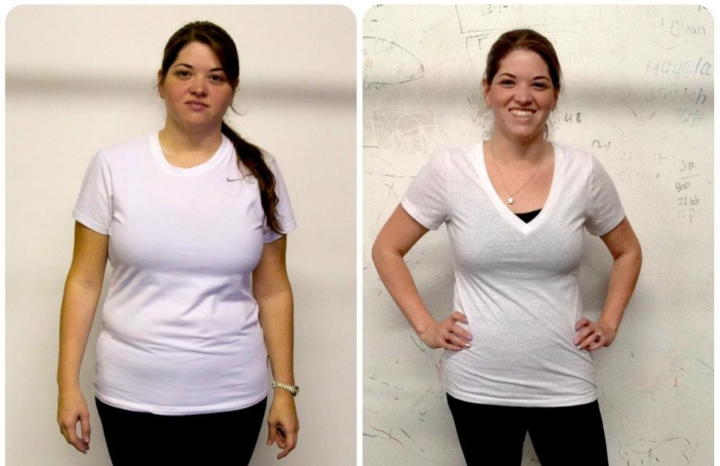
Buckwheat diet menu
The buckwheat diet menu involves eating various dishes based on this grain. Therefore, it is necessary to try to diversify it as much as possible. A sample meal plan for a week looks like this:
- Day 1:
- Breakfast: steamed buckwheat, a glass of kefir.
- Lunch: buckwheat cutlets, 2 glasses of kefir.
- Dinner: buckwheat in the form of a casserole, a glass of kefir.
- Day 2:
- Breakfast: buckwheat bread, tea without sugar.
- Lunch: steamed buckwheat pancakes, 2 cups of kefir.
- Dinner: a glass of low-fat kefir and an orange.
- Day 3:
- Breakfast: 1 serving of buckwheat porridge, a glass of mineral water.
- Lunch: 2 servings of buckwheat porridge, a glass of kefir.
- Dinner: 2 servings of buckwheat porridge, a glass of mineral water.
- Day 4:
- Breakfast: steamed buckwheat pancakes, buckwheat bread.
- Lunch: a portion of steamed buckwheat and a glass of kefir.
- Dinner: buckwheat and vegetable salad.
- Day 5:
- Breakfast: boiled egg, steamed portion of cereal, 1/3 cup of kefir.
- Lunch: bread, tea without sugar, buckwheat with fresh cabbage.
- Dinner: a portion of buckwheat porridge, green salad.
- Day 6:
- Breakfast: a glass of kefir and a portion of buckwheat porridge.
- Lunch: buckwheat with fried onions, apple.
- Dinner: cereal cutlets, banana.
- Day 7:
- Breakfast: a portion of buckwheat porridge, mineral water.
- Lunch: 2 servings of buckwheat porridge, a glass of kefir.
- Dinner: 2 servings of buckwheat porridge, water.
Although the diet is quite strict, it allows for small additions to the menu. For example, you can diversify your diet with vegetables or fruits. However, you should not get carried away too much, otherwise the effect will not be achieved.
Buckwheat with vegetables and fruits
The diet consists of alternating vegetable and buckwheat days, or a combination of these ingredients is allowed on the same day. It should be noted that the first option is more effective, although it is more difficult to tolerate.
With vegetables
Absolutely any vegetables and salads made from them without dressing are allowed. However, the main meal of porridge should be organized in the first half of the day. Vegetables are served raw or boiled, as well as steamed.
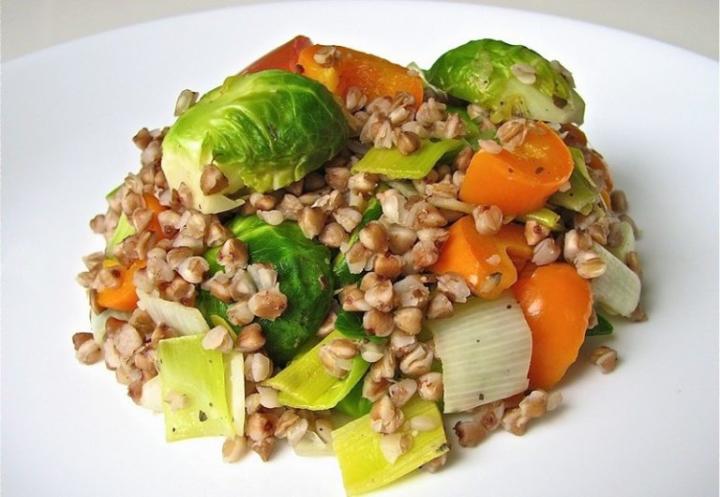
With juices
You should prefer freshly squeezed juices, and it is better to squeeze them immediately before drinking, without adding sugar. If it is difficult to follow this diet, you can choose a more gentle one - with dried fruits.
With fruits
About 2-3 fruits are eaten in the first half of the day, and you can eat them with porridge or in between meals.
With dried fruits
The daily portion is about 100 grams, and you can eat them separately or add them to porridge.
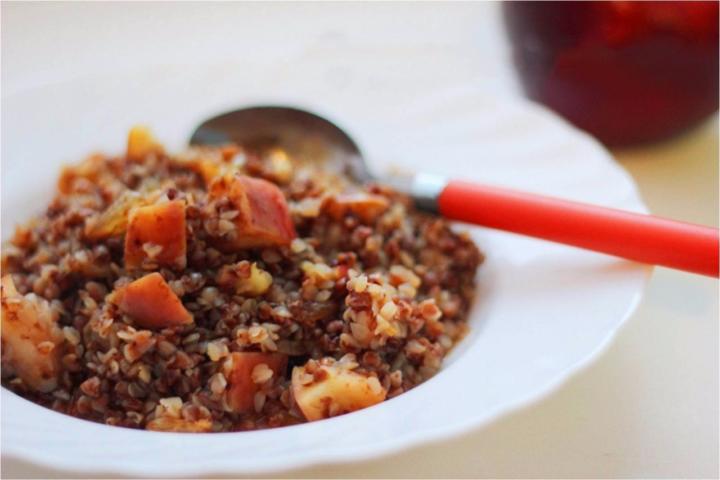
How to cook buckwheat deliciously?
A buckwheat diet involves eating not boiled porridge, but steamed cereal. The recipe is very simple. Buckwheat needs to be sorted and washed in advance. The volume of cereal is 1 glass. Then it is poured into a saucepan and poured with 1-1.5 cups of boiling water. If there is some liquid left in the pan the next morning, you can simply drain it.
Ideally, buckwheat should be steamed in a container made of clay and covered with a warm towel. You need to leave the porridge overnight, in the morning it will be ready to eat.
Another simple and modern option for preparing buckwheat is steaming it in a thermos. She will “get there” very quickly, literally in 2 hours.
You can pour cold water over the cereal, bring it to a boil and turn off the heat. This kind of porridge will still need time to become soft.
Of course, you can use the standard method of preparing buckwheat and boil it until tender. However, it is steamed cereal that retains maximum beneficial properties and also contains more coarse fiber, which cleanses the intestines.
As for taste, steamed porridge is practically no different from boiled cereal. The main thing is not to add spices or salt to it.
General Tips
1. Drink plenty of water. The body actively removes toxins along with liquid, so replenish your water balance with one mug of water every hour. 2 – 2.5 liters will come out per day. Another half liter or liter will be taken up by different drinks: teas, decoctions, juices, fermented milk.
2. Don't add salt. Nutritionists believe that salt and sugar are the worst enemies of not only your figure, but also your health. They retain moisture in the tissues and lead to the appearance of cellulite.
3. Sports and more sports! An important part of any weight loss is physical activity: the gym, swimming, running, jumping rope, a set of home exercises - all this will help you quickly overcome folds on the stomach and cellulite on the butt. Find video lessons on the Internet, practice with a trainer, friends, or your favorite dog.
Vitamin and mineral preparations. Any restriction in foods entails a deficiency of substances excluded by the diet, so be sure to replenish their reserves. Good complexes are “Vitrum”, “Duovit”, “Supradin”, “Alphabet”. They will not only help you feel more energetic, but will also protect your nails, hair and skin.
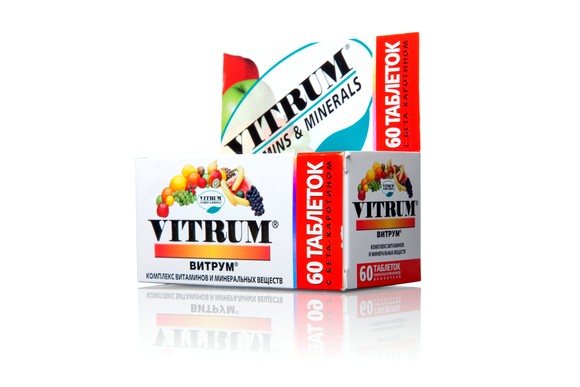
5. Fish oil and flaxseed oil. These products have two functions:
First: remove toxins from the body, normalize stool and intestinal motility.
Second: they maintain the elasticity of the breasts, skin, and the stability of the menstrual cycle, which is disrupted due to hormonal changes.
6. Go to the hospital before starting your experiments with the figure. Make sure that there are no problems with the heart, kidneys, liver, gastrointestinal tract, as well as disorders of the immune and hormonal systems.
Recipes for weight loss with buckwheat
Buckwheat cutlets recipe.
The buckwheat must be pre-cooked, then add soy to it and mix the ingredients thoroughly. Cutlets are made from the resulting mass and baked in the oven for a quarter of an hour. You can use a microwave oven for the same purpose.
To make the cutlets more vibrant in taste, you can sprinkle them with sesame seeds. This will not affect the figure.
Buckwheat casserole recipe.
In advance you will need to boil the carrots, chop the tomatoes, stew the cabbage in water, and boil the buckwheat until half cooked.
Grease a heat-resistant dish with oil and place cereals, carrots, tomatoes, and cabbage on it. Place the dish in the oven and finish cooking.
Buckwheat pancakes recipe.
To prepare pancakes, you will need to boil the cereal, beat one raw egg into it, add a little kefir and flour. Form pancakes from the resulting mixture and fry in a frying pan in a small amount of oil. It is better to take olive oil.
Contraindications
The buckwheat diet has a number of contraindications and is not suitable for every person.
The following restrictions can be noted:
- Diseases of the digestive system.
- Diseases of the cardiovascular system.
- Diabetes.
- Diseases of the digestive system.
- Pregnancy.
- Lactation.
If there are no contraindications to the use of the buckwheat diet, but while following it your health begins to deteriorate, it is necessary to abandon it.
Reviews from those who have lost weight
The results of the diet largely depend on factors such as constitution, lifestyle, and type of metabolism. Still, reviews of the popular buckwheat diet are mostly positive:
- “...I only lost 2.5 kilograms in a week, but I’m very pleased. Allergic rashes, which tormented me for a very long time, disappeared. I will continue to practice this method of cleansing.”
- “...Feeling of terrible disgust for buckwheat, kefir and apples. And this is just after 5 days. What will happen after 14??? It’s very difficult to pass this test!”
- “...In 14 days I lost 10 kg, which became the reason for the envy of my friends. In general, it was hard, but it all depends on your personal attitude. I had an incentive."
- “...I lost weight for a month, lost 13 kg, but was on a gentle diet. I tried to walk more.”
The correct way out of the diet is a guarantee of consolidation of the result. It is strictly forbidden to pounce on all foods; you need to introduce them into your diet gradually!
Doctors' opinion on the buckwheat diet
Nutritionists believe that the buckwheat diet is effective, but unbalanced. In addition, the lost kilograms will very soon come back, since the body lost them under “emergency conditions,” that is, while eating predominantly carbohydrate-rich, monotonous foods. The longer muscles are deficient in protein, the more they suffer. Over time, a lack of muscle mass may develop, and metabolic disruptions will occur.
Doctors do not recommend sticking to a buckwheat diet for more than 3 days. Moreover, even these days, it is best to supplement the consumption of buckwheat with a low-fat fermented milk drink, fruits and herbs. Doctors warn against prolonging any diet if a person becomes severely unwell.
In addition, nutritionists say that the lack of salt and sugar in the diet has a negative impact on the condition of the body. Despite the fact that buckwheat is very useful, it is not able to cover all human needs. Proteins of plant origin cannot fully replace proteins of animal origin.
Nutritionists strongly recommend simply including buckwheat in your daily menu. It is especially necessary for athletes and people with weakened immune systems. A diet based solely on buckwheat is not approved. However, if you nevertheless decided to try this weight loss program on yourself, then you should not wait longer than one week.
Gentle programs
Not everyone can endure strict diets, and rapid weight loss is often accompanied by even faster weight gain. That is why nutritionists have developed gentle diets; they provide the body with the necessary nutrients.
Multi-diet with buckwheat
The menu for such a diet consists of many products, but no more than three of the listed ones can be added to the porridge per day.
In addition to buckwheat porridge, you can eat:
- low-fat fermented milk products;
- fruits and dried fruits;
- vegetables;
- eggs;
- lean fish and meat.
Anti-cellulite
Products that stimulate cleansing of the intestines and liver are consumed - green tea, herbal decoctions, water, fruits, vegetables. Junk food is strictly prohibited; occasionally you can treat yourself to nuts and seeds, which, like low-fat fermented milk products, are used as a snack.
Antioxidant
The menu portion includes steamed buckwheat in a limited quantity - 50 grams and a salad consisting of two apples, kiwi and an orange or other citrus fruit.
